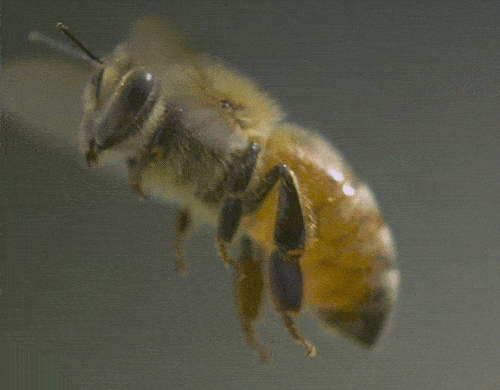- Your cart is empty
- Continue Shopping
Sugar Syrup Recipe For Beekeepers

Sugar Syrup Recipe For Beekeepers
We’re often asked why beekeepers need to supplement feed their bees with sugar syrup. They eat honey, right? Feeding your bees helps nourish a newly established colony or lets an existing colony make it through a tough winter when honey stores are running low.
Feeding bees can quickly become confusing, especially for the new beekeeper. This guide will help you choose the correct syrup, how to mix it and how to feed it to your colonies!
WHEN TO FEED THROUGHOUT THE YEAR
This completely depends on where you are located but in general liquid feed supplementation is necessary during periods when honey is running low in the hive such as in late winter or early spring.
Newly Packaged Bees: It is always necessary to start newly installed packages of bees on liquid feed. Sugar water stimulates wax production necessary for comb building, which is especially important for a new beehive. In addition, the bees need the sugar water to fuel their other activity both inside and outside the hive. Continue to feed newly installed packaged bees until they quit taking it up which should be about the same time the first major nectar flow of the season starts.
Extraction season: If harvesting honey during the fall season, supplemental feeding may be necessary when there is a dearth of nectar. After extracting, we highly recommend leaving enough honey on your hive from the spring and summer flow to get your bees at least through late winter. This equates to approximately 2 honey-filled deep supers (9 5/8”) but can vary depending on how large your colony is.
HOW TO MAKE SUGAR SYRUP
For late winter or early spring feeding, make a 1:1 syrup using 1 pound of water (2 cups) to 1 pound of sugar. If feeding in the fall (if not enough honey was left on the hive after the honey flow), make a 2:1 syrup using 2 pounds of sugar per pound of water.
TEMPERATURE MATTERS
Bees prefer liquid sugar water to sugar granules for feed because it is easier for them to process. With that being said, it all depends on the temperature. If it is consistently above 50 degrees the bees will take the sugar water. If it is below 50 degrees they will take the solid sugar (in the form of solid cane sugar, fondant, and even candy. source
When should I feed?
In most cases, thriving colonies are able to support themselves by foraging and collecting nectar from natural resources. However, they do occasionally benefit from the addition of sugar syrup. Bees should be fed in the following situations:
- New swarm
- New package or nuc
- Recently moved hive
- Low honey stores approaching winter
- Low bee population
- Drought (resulting in few flowers)
Bees always prefer nectar over syrup. Therefore, if bees are successfully foraging and bringing in enough nectar for the colony, they won’t take the syrup. In that case, remove the feeder before the syrup spoils and add later if needed.
WHEN NOT TO FEED
Colonies should never be fed when honey supers are on. You’ll end up with syrup in the honey super frames instead of honey.
Which ratio should I use?
RATIOS BY WEIGHT
Common bee sugar syrup ratios are 2:1, 5:3, 3:2, and 1:1.
What does this mean? Ratios are properly measured by weight, not volume. So 2:1, for example, is 2 parts sugar and 1 part water, by weight. To measure 2:1 correctly would use 2 pounds sugar with 1 pound of water.
Measuring ratios by volume, for example, 2 cups sugar with 1 cup water, is incorrect and will not yield the desired ratio. In this example, 2 cups of sugar weigh 400 grams and 1 cup of water weighs 227 grams, so the final ratio, when measured by volume, would be 1.76: 1, not 2:1.
THICK OR THIN
“Thinner” syrups like 1:1 (with less sugar) are similar to flower nectar and should be fed in the spring and summer.
Heavier syrup like 2:1 has more sugar with less water which is best for fall feeding. Fall days are often shorter and cooler than summer days. With more sugar than water, it is easier for the bees to evaporate off the water quickly for storage in preparation for winter.
Choosing the right feeder
I prefer internal feeders like frame feeders and top feeders, and highly recommend avoiding Boardman/entrance feeders which invite robbing.
Syrup Storage
I have two methods for syrup storage, depending on how much I make and how soon I am going to use it.
When feeding all the bee yards, I make 5-10 gallons the night before (so it can cool before use). I found the easiest way to transport syrup is in a water cube like this one.
For smaller batches that I don’t use as often like when I am feeding a new swarm, I store the syrup in the fridge between use. These heavy duty gallon jugs are the most economical and easiest to store in the fridge.
How to make syrup
To make syrup, heat the desired amount of water until almost boiling. Do not boil water as boiling water will result in a crystallized solution. Remove water from heat and stir in sugar. Allow to cool and feed to bees. Add Healthy Honey Bee if desired.
Regular granulated white sugar is the best sugar to make syrup.
Healthy Honey Bee
I always add homemade Healthy Honey Bee in our syrup. It has many added benefits, most notably it keeps the syrup from spoiling quickly.
Syrup Mixing Chart
The chart below will create slightly larger volumes. For example, the recipe for 2:1 that uses 1 gallon of water will make about 1 1/2 gallon of syrup.
Depending on the ratio chosen and accuracy of measurement…
- 1 gallon water makes about 1 ¼ to 1 ½+ gallon syrup
- ½ gallon water makes about ⅔ to ¾+ gallon syrup
- 1 quart water makes about 1 ¼ to 1 ½+ quart syrup
- 1 pint water makes about 1 ¼ to 1 ½+ pint syrup
Syrup Mixing Chart
| Desired Ratio of Sugar : Water |
Sugar | Water |
|---|---|---|
|
2:1
(Feed in Fall) |
||
| 16 ¾ pounds (34 cups) |
1 gallon (128 ounces) |
|
| 8 pounds (16 ¼ cups) |
½ gallon (64 ounces) |
|
| 4 pounds (8 cups) |
1 Quart (32 ounces) |
|
| 2 pounds (4 cups) |
1 Pint (16 ounces) |
|
|
5:3
Feed year-round |
||
| 14 pounds (28 cups) |
1 gallon (128 ounces) |
|
| 6 ½ pounds (13 cups) |
½ gallon (64 ounces) |
|
| 3 ⅓ pounds (6 ⅔ cups) |
1 Quart (32 ounces) |
|
| 1 ½ pound (3 cups) |
1 Pint (16 ounces) |
|
|
3:2
Feed year round |
||
| 12 ½ pounds (25 cups) |
1 gallon (128 ounces) |
|
| 6 pounds (12 cups) |
½ gallon (64 ounces) |
|
| 3 pounds (6 cups) |
1 Quart (32 ounces) |
|
| 1 ½ pound (3 cups) |
1 Pint (16 ounces) |
|
|
1:1
Feed in Spring |
||
| 8 ¼ pounds (16 ½ cups) |
1 gallon (128 ounces) |
|
| 4 pounds (8 cups) |
½ gallon (64 ounces) |
|
| 2 pounds (4 cups) |
1 Quart (32 ounces) |
|
| 1 pound (2 cups) |
1 Pint (16 ounces) |


